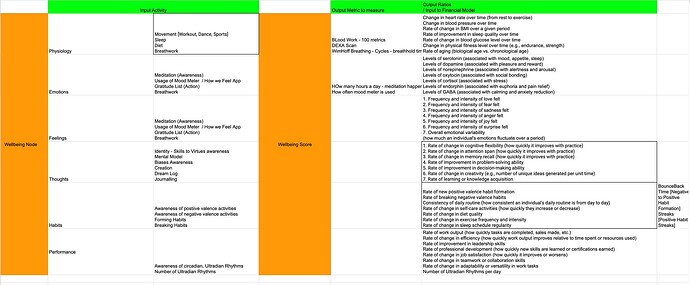Title
A distributed economic measurement protocol for an ownership economy
Team member names
Dick Bryan
Short summary of your improvement idea
Protocol that supports coexisting multiple modes of measuring assets can enable openly-discussed and evolving perspectives on what constitutes ‘value creation’ in an economy.
What is the existing target protocol you are hoping to improve or enhance?
Asset definition and measuring ownership. There is widespread interest in asset ownership in a network, giving agents emerging ‘skin in the game’ (e.g. the “Ownership economy” thesis of Jesse Walden). But how are assets defined and their value measured? Standard economic and accounting conventions use narrow definitions: assets are measured by reference to expected profit. The function of money called ‘unit of account’ (UoA) embeds this calculus: an external third party (the state) defines both the money unit and the accounting structure to which it applies.
Defining assets through protocol – a code that structures economic communication and coordination and thus defines economic-organizational capacities – enables new standards of definition and measurement. Moreover, there could be multiple UoAs within a network (not a monologic): what constitutes ‘assets’ and how agents count (value) them can be determined by distributed processes that incorporate diverse views. We just have to throw off the presumed constraints of the externally given monologic, and possibilities will be revealed.
What is the core idea or insight about potential improvement you want to pursue?
How do you measure with multiple UoAs and prevent the propensity to collapse to a single unit, yet guarantee interoperability across the units? Answers lie in the specification of rights and obligations around asset ownership: holding asset ownership (‘stake’ or ‘shares’) in non-reducible UoAs, while lines of credit, collateralized by stake, have a shared UoA. The financial logic is that assets are measured in their unique attributes but fully-collateralized credit, thought as a derivative on those assets (financial exposure to those assets; an option in case of default) can be measured in a common UoA. (E.g., in weather derivative markets, rainfall and temperature must be measured in different units but their derivatives (futures and options) are measured in the same unit (dollars).)
What is your discovery methodology for investigating the current state of the target protocol?
- Comparative analysis of economic models that don’t collapse to money and relation to financial derivative logics, especially:
A) Arrow & Debreu’s Theory of Value 1959
B) Sraffa’s Production of Commodities by means of Commodities 1960
C) Bryan & Rafferty’s Capitalism with Derivatives 2006
D) Bryan, Lopez & Virtanen’s Protocols for Postcapitalist Expression 2023 - Modeling of a market that complies with the protocol proposal
In what form will you prototype your improvement idea?
A draft proposal (formal protocol model) with expert feedback.
How will you field-test your improvement idea?
A restricted pilot and workshop with experts on ‘money’ and clearing house protocols.
Who will be able to judge the quality of your output? Ideally name a few suitable judges.
Jacquline Mallett, Prof. Computer Science (University of Reykjavik); member, Supervisory Board of Iceland’s Central Bank. Works on modeling distributed systems.
Ethan Buchman, Co-founder Cosmos and Informal Systems, works on collaborative finance networks and redefining money.
Ethan Frey, co-founder CosmWasm.
Yanis Varoufakis, economist and political activist.
What is the success vision for your idea?
Widespread recognition that distributed, non-state tokens give possibilities for reimagining a socially-aware, environmental, communal-yet-scalable approach to economy.
How will you publish and evangelize your improvement idea?
Open source protocol model documentation in Postcapitalist Discourse and Liberatory Computing Library. Initial presentation at Finance and Society Conference, Sheffield, September. (Finance and society conference 2024 – Finance and Society Network)


